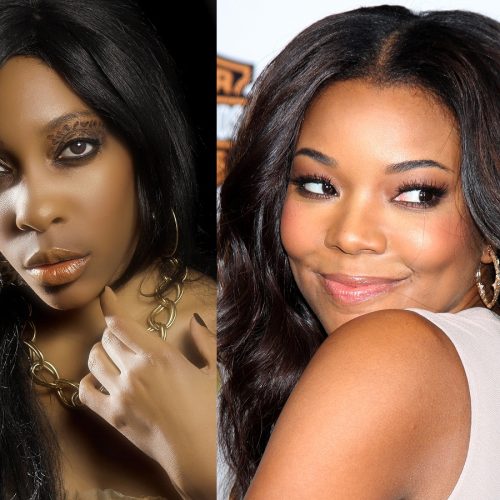 After deciding on what texture hair you want & the weft style you prefer, it’s now time to decide which weaving technique you will use to install your extensions. Full of partial weave? I will break down the main pro’s and cons with each weaving technique to help you choose.
After deciding on what texture hair you want & the weft style you prefer, it’s now time to decide which weaving technique you will use to install your extensions. Full of partial weave? I will break down the main pro’s and cons with each weaving technique to help you choose.
Full weave
Some people use the term full weave to describe a weave with most of your hair braided up except the little leave out at the front (also called the ‘horseshoe’). I don’t. A full weave is when all your hair has been braided up and extension hair is applied over your own.
Pros:
- It’s easy to install as there is a large margin for error in terms of track placement and little need to cut the tracks.
- All your hair underneath is protected allowing it to grow.
- You don’t have to worry about blending your own hair with the extension hair.
- Taking care of the hair is easier as you are not don’t have two different routines for the extension hair and your own leave out hair
Cons:
- It tends to look less natural unless you use a lace closure/frontal.
- There is a learning curve with maintaining lace closures that could turn out to be a hassle for some.
- If you don’t use a closure your style will have less versatility as you won’t be able to part you hair where you like.
- You will only be able to wear low ponytails to avoid exposing the tracks.
Partial Weave
For me, a partial weave involves any one of a few techniques. It could be clip in hair extensions where extensions are applied at the roots of your loose hair using wig clips. Partial weaves also involve the common weaving method where majority of the hair is braided leaving a thin section at the top for parting, on the sides and possibly the back as well to allow for wearing of high ponytails.
Some ladies also braid all but a little 1/2 inch section at the front hairline to cover the tracks.
Pros:
- These give you the most natural looking hairstyle because your own scalp and hairline is visible. There really isn’t any substitute for your own scalp and if you can get extensions that match your own natural hair texture, you can fool even the most experienced eye!
- If you leave enough hair out, you have plenty of versitility because you will be able to move the location of your part.
- If you have left hair out at the back you will be able to wear high ponytails!
Cons:
- If you are not well versed in hair care having your own hair out to cover the weave for extended periods of time may lead to breakage of your leave out.
- You may find it difficult to blend with certain textures of hair unless your own hair already has the same texture. It’s not uncommon for ladies to resort to flat ironing their leave out hair daily to match super straight extension hair which can only lead to heat damage and breakage.
It’s not the easiest thing in the world blending kinky curly hair extensions with relaxed hair or trying to get naturally kinky curly hair to blend with silky smooth extensions so it is a good idea to switch between full and partial weaves periodically to give your leave out a break from styling damage.
Lace frontals or closures are great because they are made to look like a real scalp. You can get the benefit of a full head weave with the undetectable natural looking install that a partial weave provides. Truly the best of both worlds!





